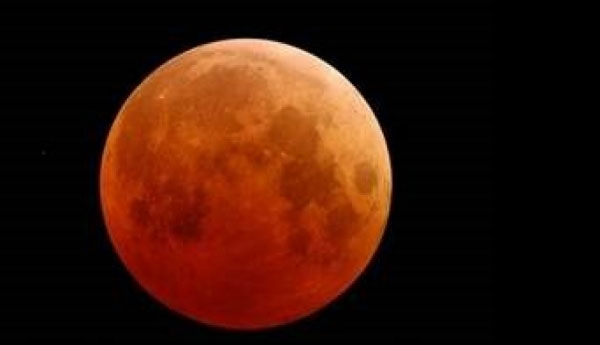First Super Blue Moon Lunar Eclipse After 152 Years Today
For the first time since 1866, three lunar events will coincide on the same day – A blood moon total lunar eclipse, a super moon and a blue moon will be visible to us on 31st January 2018 at the moon rise in the eastern horizon after 6.15 p.m. – Professor in Physics, and Director, Astronomy and Space Science Unit of the University of Colombo Prof. Chandana Jayaratne said. “When two full moons fall on the same month the second full moon is called the blue moon. This is just a name and the moon does not appear in blue colour.”
Prof. Jayaratne further said that size and brightness of the full moons on poya days vary slightly from month to month because of the non-circular but elliptical shape of the Moon’s orbit around the Earth with closest distance of Moon to the Earth (“perigee”) is about 50,000 km closer than the furthest distance (“apogee”). On January 31st, at perigee, the moon lies only 358,995 km away from the Earth. As a result, the moon will appear 14% bigger and 30% brighter than some of the full moons that we have seen in the past. A similar event occurred on 2018 January 1st full moon day too.
When a Full Moon takes place while the Moon is near its closest approach to Earth, it is called a Super Full Moon or a Super moon. A Micro moon, on the other hand, is when a Full or a New Moon is near its farthest point from Earth, around apogee. It’s also known as a Minimoon, and in this year the smallest full moon is due on July 27th 2018 and there will a total lunar eclipse on that day too.
There will be a total lunar eclipse too on the same day visible to Sri Lanka with the moon rising from the eastern horizon around 6.15 p.m. The eclipse begins at 4.21 p.m. Sri Lanka Standard Time and will end up at 9.38 p.m. on January 31st, 2018. Since beginning of the eclipse occurs during day time for Sri Lanka only the latter part of this eclipse is visible to us after sunset.
Total part of the eclipse can be seen after 6.22 p.m. with the moon entering completely into the umbra – the dark shadow of the Earth. The maximum eclipse occurs at 6.59 p.m., total part of the eclipse ends at 7.38 p.m., partial eclipse ends at 8.41 p.m. After that the moon will enter into the less dark shadow of the earth, the penumbra and only the dimming of the moon light will occur till eclipse ends at 9.38 p.m. with the moon leaving the penumbral part of the eclipse said Prof. Chandana Jayaratne, Director, Astronomy and Space Science Unit, Department of Physics, University of Colombo. This eclipse is visible to many countries in Asia, Australia, Pacific and North America. The best time to observe the eclipse is from 6.15 p.m. to 8.41 p.m. and watch towards eastern sky above the horizon.


